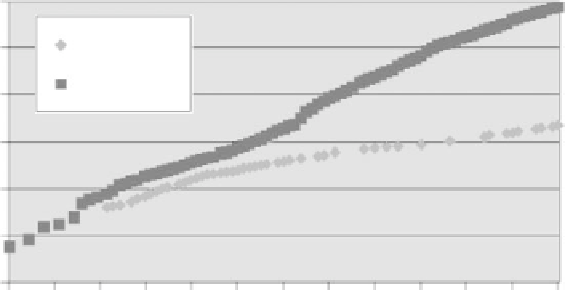Database Reference
In-Depth Information
The macromolecules known as proteins are responsible for some of the most
important functions in an organism, such as constitution of the organs (struc-
tural proteins), the catalysis of biochemical reactions necessary for metabolism
(enzymes), and the maintenance of the cellular environment (transmembrane
proteins). Thus, proteins are the most essential and versatile macromolecules
of life, and the knowledge of their functions is a crucial link in the devel-
opment of new drugs, better crops, and even the development of synthetic
biochemicals such as biofuels.
Traditional approaches for predicting protein function are experimental and
usually focus on a specific target gene or protein, or a small set of proteins
forming natural groups such as protein complexes. These approaches are low-
throughput because of the huge experimental and human effort required in
analyzing a single gene or protein. As a result, even large-scale experimental
annotation initiatives, such as the EUROFAN project,
29
,
30
are able to annotate
only a small fraction of the proteins that are becoming available due to rapid
advances in genome sequencing technology. This has resulted in a continually
expanding sequence-function gap for discovered proteins.
31
Figure 8.3 shows
that the gap between the number of available gene sequences in GenBank and
that of manually annotated protein sequences in SwissProt is continuously
increasing and currently stands at about three orders of magnitude.
32
In an attempt to close this gap, numerous high-throughput experimental
procedures have been invented to investigate the mechanisms leading to the
Growth of Sequences and Annotations Since 1982
100000000
Annotations
10000000
Sequences
1000000
100000
10000
1000
100
Ye a r
Figure 8.3
Growth of sequences and annotations on a log scale using num-
bers from GenBank and SwissProt (Figure adapted from Mayer, F. 2006.
Genome sequencing vs. Moore, Law: Cyber challenges for the next decade.
CTWatch Quarterly
. Used with permission).









